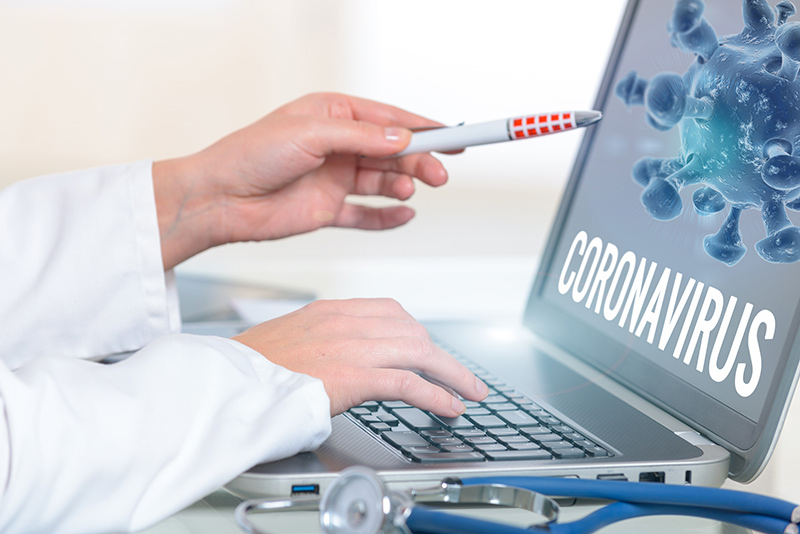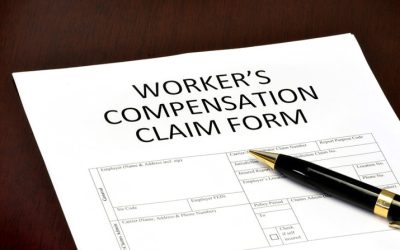Exposure to the COVID-19 virus that spreads mainly through respiratory droplets or contact with virus-infected surfaces, can occur at the workplace. Transmission can also occur while the worker travels to work, or during work-related travel to an area where there is community transmission. The risk of worker exposure to the virus depends on factors such as severity of the disease, existing medical conditions the worker may have, working environment that may affect exposure risk, and the healthcare measures available to control the impact of the COVID-19 virus as well as the success of these measures. Older adults and people with underlying medical conditions such as heart or lung disease, liver disease, diabetes, kidney disease, immune deficiencies and obesity may be at higher risk. Workers getting sick with the coronavirus via workplace exposure may be eligible for workers’ compensation benefits, if found eligible via a medical record analysis.
The risk of occupational exposure to SARS-CoV-2 virus could vary from one community to another, based on local outbreaks or particular conditions. The type of work activity, the workplace environment, the health condition of the worker, whether the workers are able to wear face coverings and follow CDC guidelines, and whether workers have to work in close contact with each other, are all factors that determine the exposure risk. The Occupational Safety and Health Administration (OSHA), the U.S. agency responsible for workplace safety regulations, says that certain categories of workers are at higher risk than others for workplace exposure to COVID-19 and its complications. To enable employers to implement proper precautions, OSHA has divided job tasks into 4 potential risk exposure levels – Very High, High, Medium, and Lower Risk. Most Americans probably fall in the lower exposure risk or medium exposure risk levels.
OSHA’s Risk Exposure Pyramid
- Lower Exposure Risk (Caution): These are workers who have minimal occupational contact with other people. They are in jobs that don’t require close contact, i.e. within 6 ft for a total of 15 minutes or more over a twenty-four-hour period. Examples are remote workers; office workers who don’t have frequent close contact with co-workers, customers, or the public; and healthcare workers providing only telemedicine services.
- Medium Exposure Risk: Workers in this risk category are those in jobs that require either frequent close contact, i.e. within 6 ft for a total of 15 minutes or more over a 24-hour period, or sustained close contact with other people in areas with community transmission. Examples include the following.
- Workers in frequent/sustained contact with their fellow workers, including under close working conditions outdoors or in well-ventilated spaces in different industrial, manufacturing, construction, agriculture, and other critical infrastructure workplaces.
- Workers such as farm workers living in temporary labor camps, or similar shared housing facilities.
- Workers in frequent outdoor or well-ventilated contact with the general public. These include workers in supermarkets/grocery stores/retail stores, pharmacies, transit and transportation operations, law enforcement and emergency response operations, restaurants and bars.
- High Exposure Risk: This category comprises jobs that have a high potential for exposure to known/suspected sources of the COVID-19 virus. Examples include the following:
- Medical transport workers such as ambulance vehicle operators moving known/suspected COVID-19 patients in enclosed vehicles.
- Healthcare delivery and support staff, i.e. hospital staff who need to enter patients’ rooms, exposed to known/suspected COVID-19 patients.
- Morgue workers involved in preparing bodies for burial/cremation of people known to have or suspected of having COVID-19 at the time of death.
- Workers who have frequent/sustained contact with coworkers, including under close working conditions indoors or in poorly ventilated spaces in different types of industrial, manufacturing, construction, agriculture, and other critical infrastructure workplaces.
- Workers who have frequent indoor or poorly ventilated contact with the general public, including workers in grocery stores, supermarkets, retail stores, pharmacies, transit and transportation operations, law enforcement and emergency response operations, bars and restaurants.
- Very High Exposure Risk: This category comprises jobs that have a very high potential for exposure to known or suspected sources of COVID-19 virus during specific medical, postmortem, or lab procedures. Examples include:
- Healthcare workers such as doctors, nurses, dentists, paramedics, and emergency medical personnel, performing aerosol-generating procedures such as cough induction collection, intubation, dental procedures and exams, bronchoscopies, or invasive specimen collection on known or suspected COVID-19 patients.
- Healthcare/lab personnel collecting/handling specimens from known or suspected COVID-19 patients.
- Morgue workers performing autopsies, which generally involve aerosol-generating procedures, on the bodies of people who are known to have or suspected of having COVID-19 at the time of their death.
Employees may move from one exposure risk level to another as and when their job duties change or when they perform different tasks in the course of their duties. Employers must perform hazard assessments and determine the worker’s initial exposure risk to the virus on the job, and changes to the exposure risk if and when the job duties change.
Now, let us look at what can be done to protect workers in the different risk categories.
- Measures to protect workers in Lower Exposure Risk (Caution) category: Employers should follow the general guidance provided. Additional engineering controls are not recommended for workers in this category. Employers must make sure that engineering controls, if any, used to protect workers from other job hazards continue to function as intended.
- Measures to protect workers in the Medium Exposure Risk category: Employers should follow the general guidance provided. Engineering controls to be implemented include installation of physical barriers such as clear plastic sneeze guards, where feasible. Administrative controls include:
- Offering face masks to ill employees and other individuals in the workplace to contain respiratory secretions until they are able to leave the workplace for medical evaluation or care, or to return home. If masks are in shortage, a reusable face shield that can be decontaminated can be offered for protection.
- Visitors to the employer’s facilities must be informed about symptoms of COVID-19 and requested to minimize contact with staff until healthy again by posting signs about COVID-19 in areas where visitors may gather such as reception, common areas, holding spaces, break/dining rooms. It is important to ensure that law enforcement staff take proper precautions with individuals they may encounter in the course of carrying out their job functions. Intake checklists must be updated and procedures instituted that require jail staff to ensure proper screening for people who may need possible COVID-19 medical examination and/or isolation.
- Limit/restrict the public’s access to the worksite.
- Consider implementing strategies that would help minimize face-to-face contact such as phone-based communication, telecommuting jobs and drive-through windows among others.
- Communicate the availability of worker health resources or medical screening such as telemedicine services or on-site nurse.
PPE or Personal Protective Equipment: When choosing PPE, factors such as cost, function, fit, decontamination ability, and disposal need to be considered. Employers should choose PPE that protects workers specific to their workplace. Employees who have medium exposure to risk may have to wear a combination of gloves, a gown, a face mask, and/or a face shield or goggles. The choice of PPE will vary by the nature of job, types of exposures workers have while on the job, and the employer’s hazard assessment results.
- Measures to protect workers in the High/Very High Exposure Risk category: Employers must follow the guidance provided and implement the following control measures.Engineering controls must be as follows:
- Make sure that appropriate air-handling systems are installed and maintained in healthcare facilities.
- CDC recommends that people with known or suspected COVID-19 infection be placed in an airborne infection isolation room or AIIR, if available.
- Wherever available, isolation rooms must be used for performing aerosol-generating procedures on patients with known/suspected COVID-19 infection. Autopsy suites or similar isolation facilities can be used for postmortem activities when performing aerosol-generating procedures on the bodies of people who are known to have/suspected of having COVID-19 at the time of their death.
- Use special precautions associated with Biosafety Level 3 when handling specimens from known/suspected COVID-19 patients.
Recommended administrative controls are:
If working in a healthcare facility, workers must follow existing guidelines and facility standards of practice to identify and isolate infected individuals, and to protect workers.
- Post signs that request patients and their family members to immediately report symptoms of respiratory illness when they arrive at the healthcare facility and use disposable face masks.
- Develop and implement policies that help reduce exposure such as grouping COVID-19 patients when single rooms are not available.
- Provide enhanced medical monitoring of workers during COVID-19 outbreaks.
- Provide workers training and job-specific education on preventing COVID-19 transmission.
- Make sure that psychological and behavioral support is available to handle employee stress.
- Safe work practices to follow: Emergency responders and other essential personnel who could be subject to exposure when working away from fixed facilities, must be provided with alcohol-based hand rubs containing at least 60% alcohol for decontamination in the field.
- Personal Protective Equipment or PPE: Workers in the high or very high exposure risk category must wear a gown, gloves, face shield or goggles, a face mask or a respirator, based on their job tasks and risk of exposure. The choice of PPE could vary, mainly for workers in laboratories or morgue facilities who may require additional protection against body fluids, blood, chemicals and other materials to which they could be exposed. Additional PPE may include medical/surgical gowns, aprons, fluid-resistant coveralls, or other disposable/reusable protective clothing. Workers who dispose of PPE and other infectious waste material must be provided the appropriate PPE as well as adequate training.
Proper policies and messages, education and training for workers and managers will help increase awareness of COVID-19 and the ways to prevent or control its transmission. Also, workers with COVID-19 and their contacts must be managed appropriately to prevent complications and adverse events. If workers get sick with COVID-19, they can always apply for workers’ compensation coverage that will provide them the financial assistance that is much needed. As mentioned at the outset, medical record analysis and reliable medical review solutions become highly relevant considerations for successful workers’ compensation claims processing.




